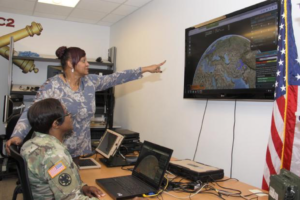2019 VA Disability Rates
The 2019 VA Disability rates saw a 2.8% increase based on the Cost-of-Living Adjustment (COLA) increase that was announced by the Social Security Administration. To calculate the VA disability rate increase the average of the indices of July, August, and September 2018 was compared with the 2017 3rd quarter average. 2019 disability rates will be effective 12/1/2018.
See the 2019 VA Disability Rates below!
VA disability rate increases are determined by Cost-of-Living-Adjustments (COLA). See our COLA increase watch for more information.
As tax reminder, do not include VA disability benefits as gross income on income tax statements.
VA disability rate tables for veterans with a disability rating of 10 percent or higher. Eligible veterans with disabilities can receive up to $3,625.99 per month as a tax free monetary benefit. Veterans with disabilities can use the following VA disability charts to determine how much financial assistance they are eligible for.
2019 VA Disability Rates – Effective 12/1/2018
Basic Rates – 10% – 100% Combined Degree Only.
| 10% – 20% (No Dependents) | |||||||
| Percentage | Rate | ||||||
| 10% | $140.05 | ||||||
| 20% | $276.84 | ||||||
| 30% – 60% Without Children | |||||||
| Dependent Status | 30% | 40% | 50% | 60% | |||
| Veteran Alone | $428.83 | $617.73 | $879.36 | $1,113.86 | |||
| Veteran with Spouse Only | $479.83 | $685.73 | $964.36 | $1,215.86 | |||
| Veteran with Spouse & One Parent | $520.83 | $739.73 | $1,032.36 | $1,297.86 | |||
| Veteran with Spouse and Two Parents | $561.83 | $793.73 | $1,100.36 | $1,379.86 | |||
| Veteran with One Parent | $469.83 | $671.73 | $947.36 | $1,195.86 | |||
| Veteran with Two Parents | $510.83 | $725.73 | $1,015.36 | $1,277.86 | |||
| Additional for A/A spouse (see footnote b) | $47.00 | $62.00* | $78.00 | $94.00 | |||
| 70% – 100% Without Children | |||||||
| Dependent Status | 70% | 80% | 90% | 100% | |||
| Veteran Alone | $1,403.71 | $1,631.69 | $1,833.62 | $3,057.13 | |||
| Veteran with Spouse Only | $1,522.71 | $1,767.69 | $1,986.62 | $3,227.58 | |||
| Veteran with Spouse and One Parent | $1,617.71 | $1,876.69 | $2,109.62 | $3,364.37 | |||
| Veteran with Spouse and Two Parents | $1,712.71 | $1,985.69 | $2,232.62 | $3,501.16 | |||
| Veteran with One Parent | $1,498.71 | $1,740.69 | $1,956.62 | $3,193.92 | |||
| Veteran with Two Parents | $1,593.71 | $1,849.69 | $2,079.62 | $3,330.71 | |||
| Additional for A/A spouse (see footnote b) | $109.00 | $125.00 | $141.00 | $156.32 | |||
| 30% – 60% With Children | |||||||
| Dependent Status | 30% | 40% | 50% | 60% | |||
| Veteran with Spouse and Child | $516.83 | $735.73 | $1,026.36 | $1,290.86 | |||
| Veteran with Child Only | $462.83 | $662.73 | $935.36 | $1,181.86 | |||
| Veteran with Spouse, One Parent and Child | $557.83 | $789.73 | $1,094.36 | $1,372.86 | |||
| Veteran with Spouse, Two Parents and Child | $598.83 | $843.73 | $1,162.36 | $1,454.86 | |||
| Veteran with One Parent and Child | $503.83 | $716.73 | $1,003.36 | $1,263.86 | |||
| Veteran with Two Parents and Child | $544.83 | $770.73 | $1,071.36 | $1,345.86 | |||
| Add for Each Additional Child Under Age 18 | $25.00 | $33.00 | $42.00 | $50.00 | |||
| Each Additional Schoolchild Over Age 18 (see footnote a) | $82.00 | $109.00 | $136.00 | $164.00 | |||
| Additional for A/A spouse (see footnote b) | $47.00 | $62.00 | $78.00 | $94.00 | |||
| 70% – 100% With Children | |||||||
| Dependent Status | 70% | 80% | 90% | 100% | |||
| Veteran with Spouse and Child | $1,609.71 | $1,867.69 | $2,098.62 | $3,352.41 | |||
| Veteran with Child Only | $1,482.71 | $1,722.69 | $1,935.62 | $3,171.12 | |||
| Veteran with Spouse, One Parent and Child | $1,704.71 | $1,976.69 | $2,221.62 | $3,489.20 | |||
| Veteran with Spouse, Two Parents and Child | $1799.71 | $2,085.69 | $2,344.62 | $3,625.99 | |||
| Veteran with One Parent and Child | $1,577.71 | $1,831.69 | $2,058.62 | $3,307.91 | |||
| Veteran with Two Parents and Child | $1,672.71 | $1,940.69 | $2,181.62 | $3,444.70 | |||
| Add for Each Additional Child Under Age 18 | $59.00 | $67.00 | $76.00 | $84.69 | |||
| Each Additional Schoolchild Over Age 18 (see footnote a) | $191.00 | $218.00 | $246.00 | $273.58 | |||
| Additional for A/A spouse (see footnote b) | $109.00 | $125.00 | $141.00 | $156.32 | |||
2018 VA Disability Rates – Effective 12/1/2017
Basic Rates – 10% – 100% Combined Degree Only.
| 10% – 20% (No Dependents) | |||||||
| Percentage | Rate | ||||||
| 10% | $136.24 | ||||||
| 20% | $269.30 | ||||||
| 30% – 60% Without Children | |||||||
| Dependent Status | 30% | 40% | 50% | 60% | |||
| Veteran Alone | $417.15 | $600.90 | $855.41 | $1,083.52 | |||
| Veteran with Spouse Only | $466.15 | $666.90 | $937.41 | $1,182.52 | |||
| Veteran with Spouse & One Parent | $505.15 | $719.90 | $1,003.41 | $1,261.52 | |||
| Veteran with Spouse and Two Parents | $544.15 | $772.90 | $1,069.41 | $1,340.52 | |||
| Veteran with One Parent | $456.15 | $653.90 | $921.41 | $1,162.52 | |||
| Veteran with Two Parents | $495.15 | $706.90 | $987.41 | $1,241.52 | |||
| Additional for A/A spouse (see footnote b) | $46.00 | $61.00* | $76.00 | $91.00 | |||
| 70% – 100% Without Children | |||||||
| Dependent Status | 70% | 80% | 90% | 100% | |||
| Veteran Alone | $1,365.48 | $1,587.25 | $1,783.68 | $2,973.86 | |||
| Veteran with Spouse Only | $1,481.48 | $1,719.25 | $1,932.68 | $3,139.67 | |||
| Veteran with Spouse and One Parent | $1,574.48 | $1,825.25 | $2,051.68 | $3,272.73 | |||
| Veteran with Spouse and Two Parents | $1,667.48 | $1,931.25 | $2,170.68 | $3,405.79 | |||
| Veteran with One Parent | $1,458.48 | $1,693.25 | $1,902.68 | $3,106.92 | |||
| Veteran with Two Parents | $1,551.48 | $1,799.25 | $2,021.68 | $3,239.98 | |||
| Additional for A/A spouse (see footnote b) | $106.00 | $122.00 | $137.00 | $152.06 | |||
| 30% – 60% With Children | |||||||
| Dependent Status | 30% | 40% | 50% | 60% | |||
| Veteran with Spouse and Child | $503.15 | $714.19 | $998.41 | $1,255.52 | |||
| Veteran with Child Only | $450.15 | $644.90 | $910.41 | $1,149.52 | |||
| Veteran with Spouse, One Parent and Child | $542.15 | $767.90 | $1,064.41 | $1,334.52 | |||
| Veteran with Spouse, Two Parents and Child | $581.15 | $820.90 | $1,130.41 | $1,413.52 | |||
| Veteran with One Parent and Child | $489.15 | $697.90 | $976.41 | $1,228.52 | |||
| Veteran with Two Parents and Child | $528.15 | $750.90 | $1,042.41 | $1,307.52 | |||
| Add for Each Additional Child Under Age 18 | $24.00 | $32.00 | $41.00 | $49.00 | |||
| Each Additional Schoolchild Over Age 18 (see footnote a) | $79.00 | $106.00 | $133.00 | $159.00 | |||
| Additional for A/A spouse (see footnote b) | $46.00 | $61.00 | $76.00 | $91.00 | |||
| 70% – 100% With Children | |||||||
| Dependent Status | 70% | 80% | 90% | 100% | |||
| Veteran with Spouse and Child | $1,566.48 | $1,816.25 | $2,041.68 | $3,261.10 | |||
| Veteran with Child Only | $1442.48 | $1,675.25 | $1,882.68 | $3,084.75 | |||
| Veteran with Spouse, One Parent and Child | $1,659.48 | $1,922.25 | $2,160.68 | $3,394.16 | |||
| Veteran with Spouse, Two Parents and Child | $1,752.48 | $2,028.25 | $2,279.68 | $3,527.22 | |||
| Veteran with One Parent and Child | $1,535.48 | $1,781.25 | $2,001.68 | $3,217.81 | |||
| Veteran with Two Parents and Child | $1,628.48 | $1,887.25 | $2,120.68 | $3,350.87 | |||
| Add for Each Additional Child Under Age 18 | $57.00 | $65.00 | $74.00 | $82.38 | |||
| Each Additional Schoolchild Over Age 18 (see footnote a) | $186.00 | $212.00 | $239.00 | $266.13 | |||
| Additional for A/A spouse (see footnote b) | $106.00 | $122.00 | $137.00 | $152.06 | |||
FOOTNOTES:
- Rates for each school-aged child are shown separately. They are not included with any other compensation rates. All other entries on this chart reflecting a rate for children show the rate payable for children under 18 or helpless. To find the amount payable to a 70% disabled Veteran with a spouse and four children, one of whom is over 18 and attending school, take the 70% rate for a veteran with a spouse and 3 children, $1,680.48, and add the rate for one school child, $186.00. The total amount payable is $1,866.48.
- Where the veteran has a spouse who is determined to require A/A, add the figure shown as “additional for A/A spouse” to the amount shown for the proper dependency code. For example, veteran has A/A spouse and 2 minor children and is 70% disabled. Add $106.00, additional for A/A spouse, to the rate for a 70% veteran with dependency code 12, $1,623.48. The total amount payable is $1,729.48.











